The people of Athens did not all have the same rights. In the 5th century BC, the city-state had a population of around 250,000. Some could participate in political life, while others had absolutely no rights at all. The social structure of a society helps us to understand the different groups that make it up. Athenian society is divided into 3 major groups:
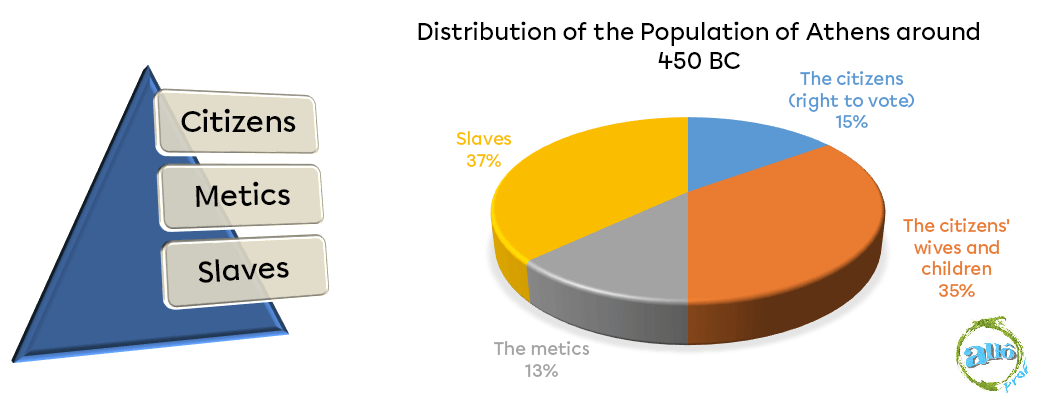
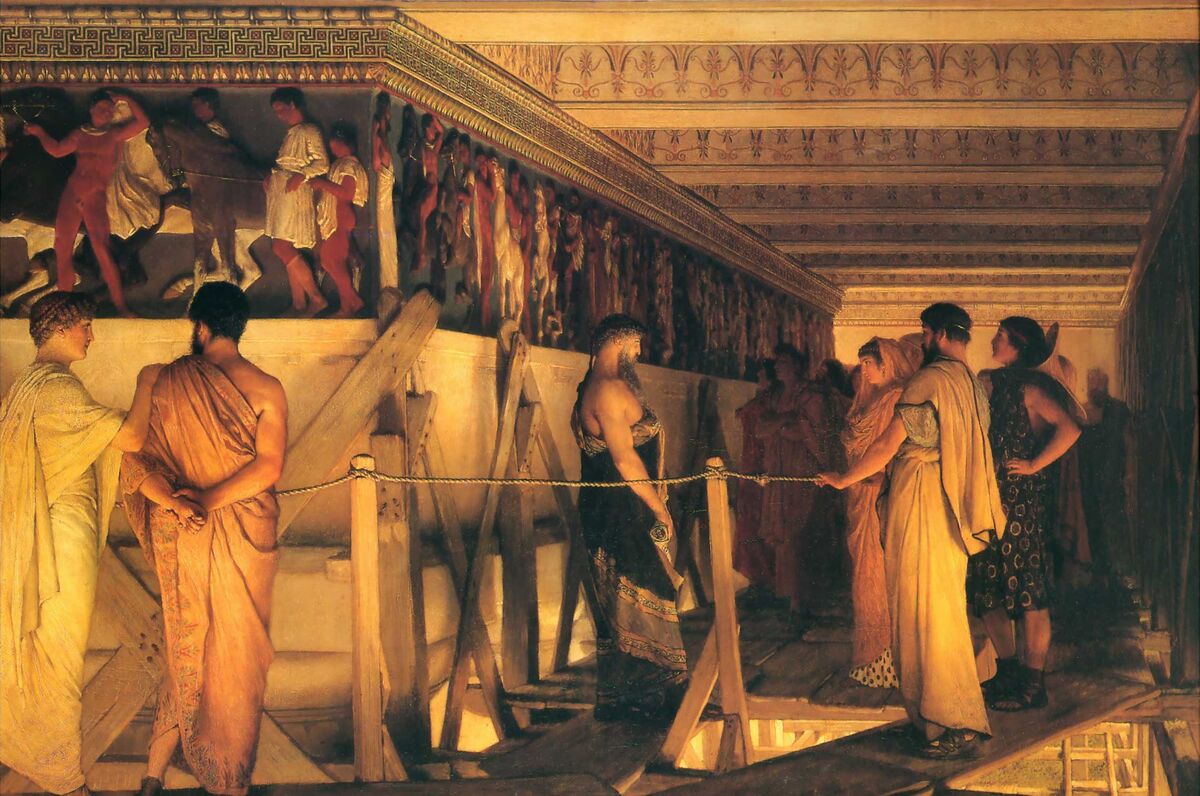
Athenian citizens observing a work of art
The Athenians invented democracy, a system that promised to give power to the people. In reality, however, it is far from the majority of the population who can participate in political life. The citizens were the most powerful members of Athenian society. They alone can take part in debates and vote on the laws applicable in the city-state. To be a citizen, you have to meet certain criteria:
- be an adult male (aged 18 and over)
- free (not a slave)
- have a citizen father and a citizen daughter mother
- have completed military service
Citizens represented around 10% of the population of Athens, far from the majority. Being a citizen brought special rights, such as the right to own land. But citizens also had responsibilities, known as duties. Here is a table showing the rights and duties of an Athenian citizen.
|
Citizens' rights |
Citizens' duties |
|
|
In 450 B.C., the metagroups represented around 13% of the population of Athens, but were excluded from political life. Here are the main groups making up the dagos:
- Immigrants
- people whose parents are not citizens
- freed slaves
The dagos are mainly made up of immigrants, which is why they are often referred to as "foreigners". They are free to work and earn money. However, they were considered foreigners, which is why they could not own land. Many became merchants or craftsmen. They had to do military service and pay a special tax.
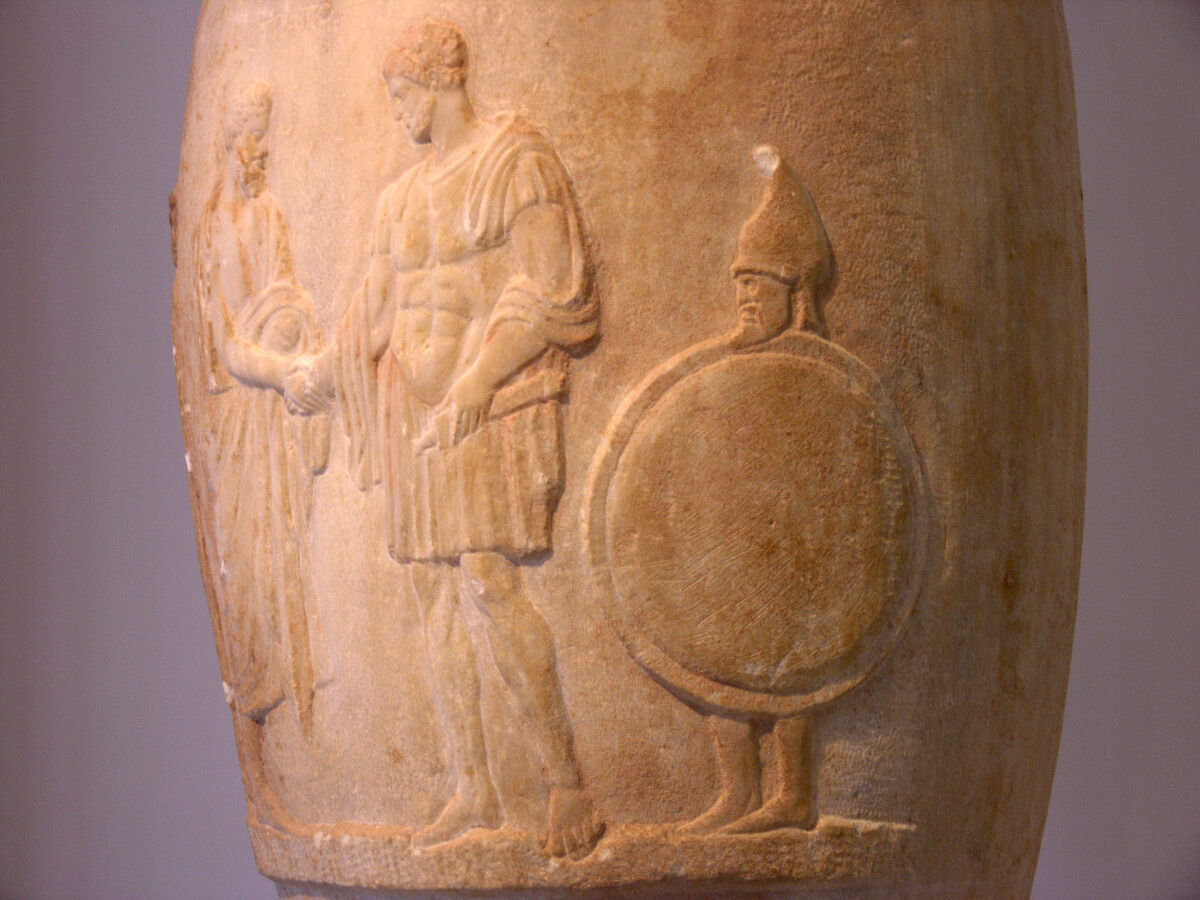
A slave (right) wears the shield and helmet of his master (left)
Slaves are people whose freedom has been taken away. They are considered objects and belong to a master whom they must obey. Ancient Greek civilisation depended heavily on slaves, who did most of the manual labour of the time. Slaves were often prisoners of war or people captured by pirates and sold abroad. The children of slaves automatically became slaves. It was possible for a slave to obtain his freedom, in which case he became a freedman and a member of the social group known as the meteca.
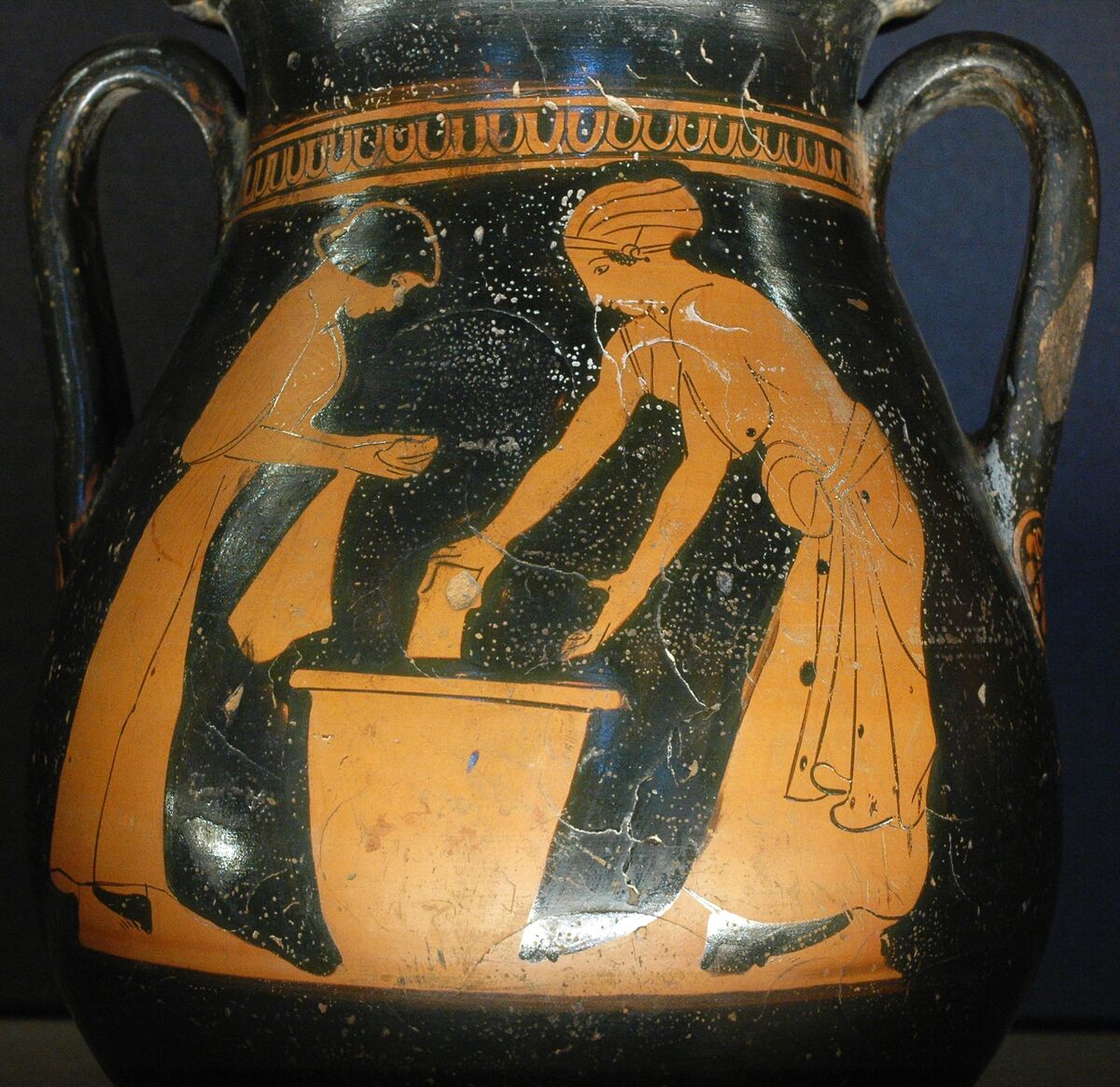
Greek woman washing clothes
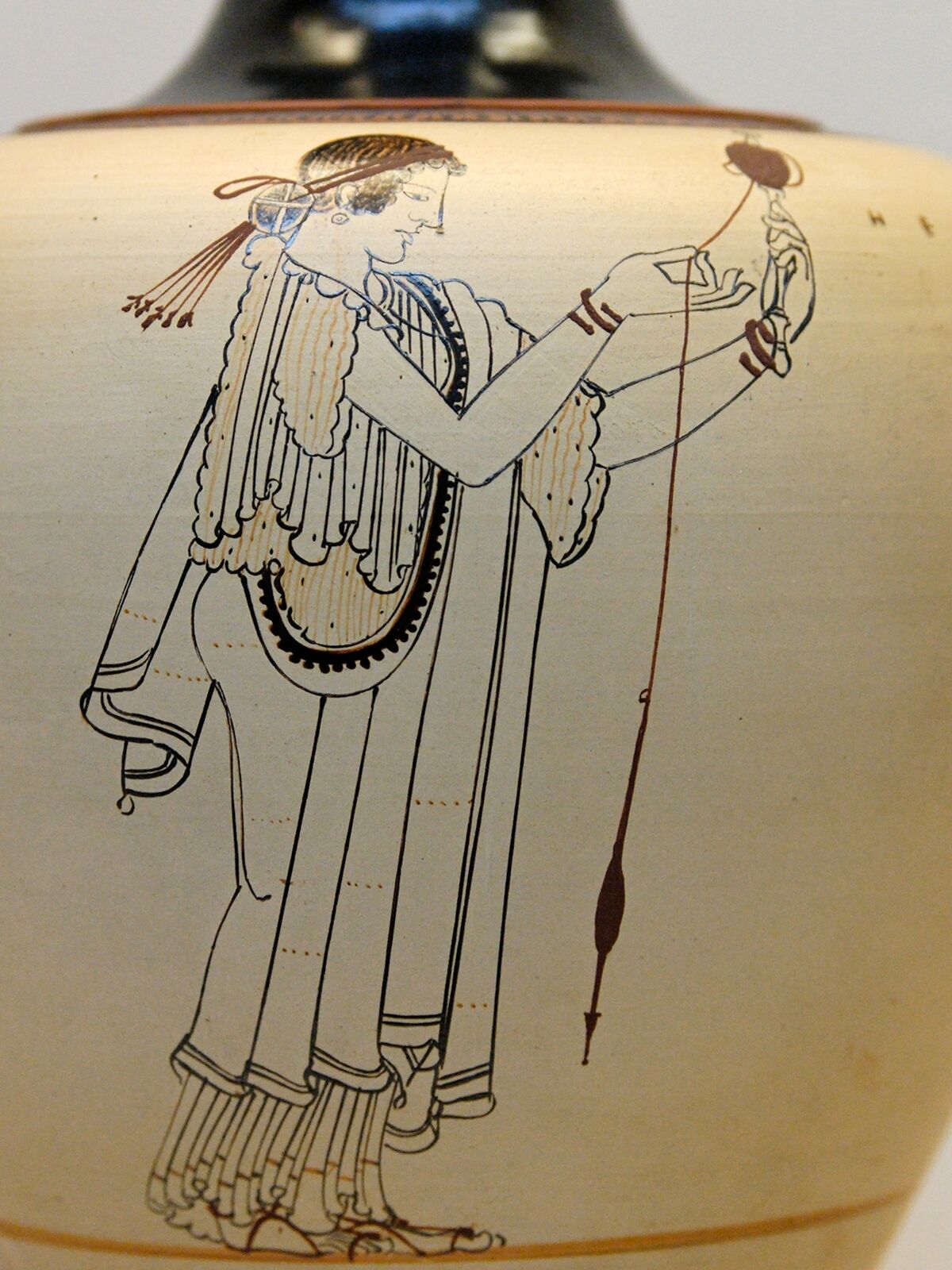
Woman spinning
In the city-state of Athens in the5th century BC, women belonged to their husband's social class. The wife of a citizen was considered a citizen, but she had no political or legal rights. Throughout her life, a woman was considered to be a minor, and was therefore under the responsibility of a man: her father, and eventually her husband.
Women spent most of their time in the gynaecae, the section of the house (private space) reserved for women and children. As well as bringing up the children, the woman was responsible for the budget, household chores and managing the slaves. She could leave the house to take part in religious festivals and go to the market.
Here is a table showing the difference between the rights and duties of the different groups living in Athens in 500 BC.
| |
Rights |
Duty |
|
Citizen |
|
|
| Dagos |
|
|
|
Slave |
|
|